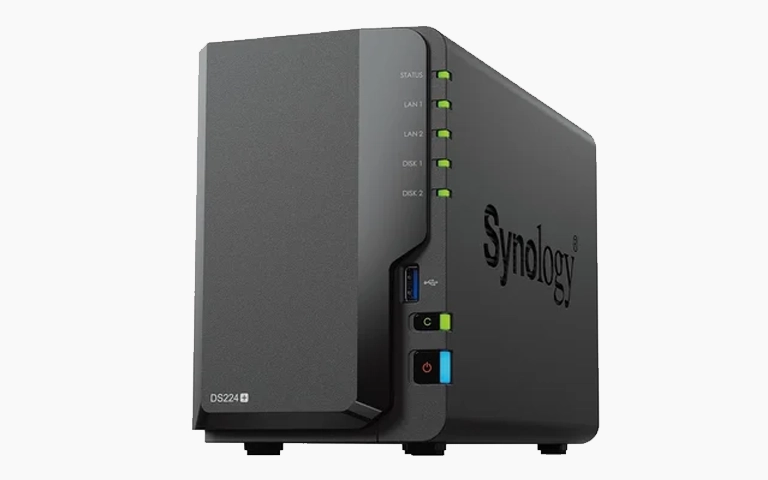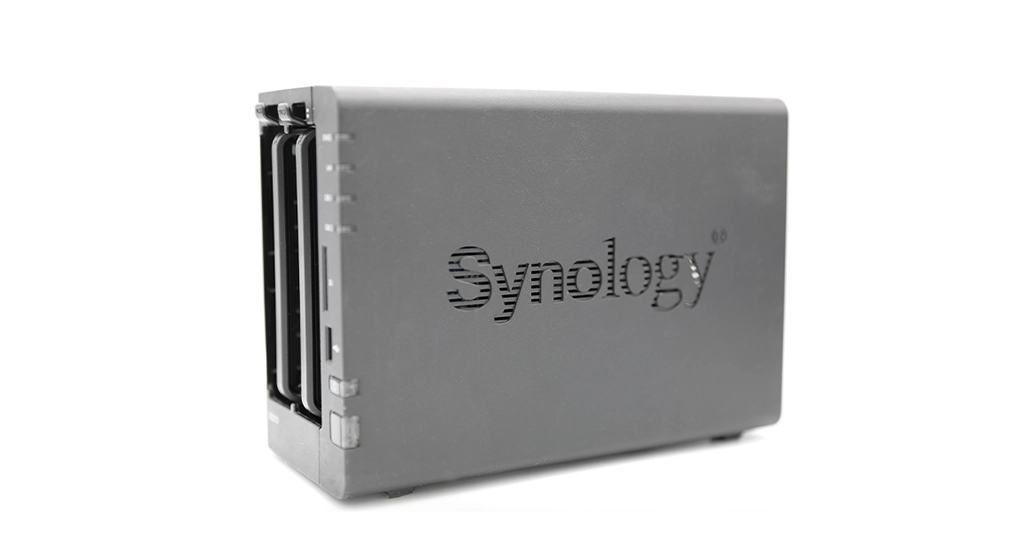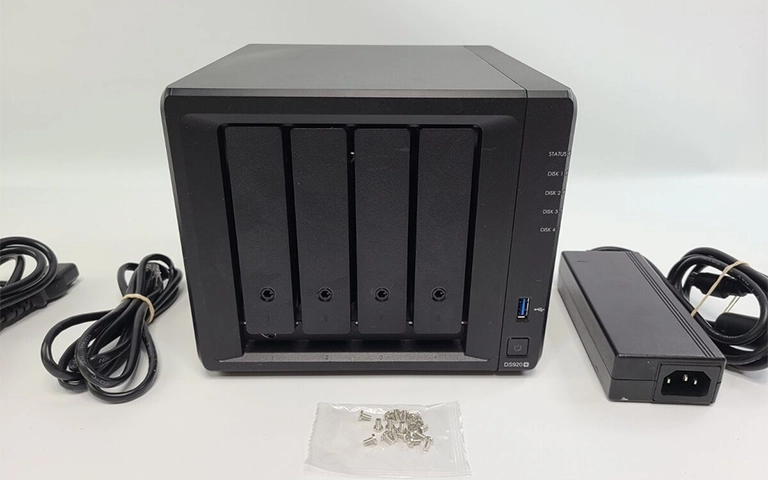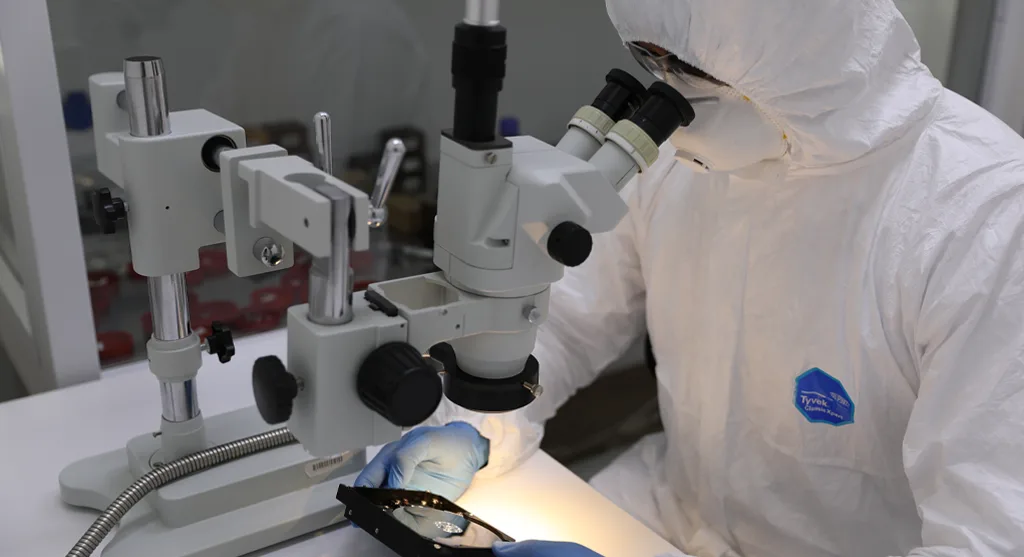A blinking blue light on your Synology NAS can be confusing and concerning, especially if it appears when you try to power on your system. While this light often signals that the device is starting up, it can also indicate an underlying issue preventing your NAS from booting properly.
In this blog, we will explain what the blinking blue light really means, explore the most common causes, and outline safe troubleshooting steps. If the problem persists, we will also cover when it is time to seek professional support.

Why Your Synology NAS Shows a Blinking Blue Light
On Synology NAS devices, the blue power LED shows the system’s status. When it blinks, the NAS is normally in the process of powering on. This stage should last only a short time before the system becomes fully operational and the light turns solid.
If the blinking continues for an unusually long period, it may mean the NAS cannot complete its boot sequence. Common causes include unstable power, hardware faults, or corrupted system software. Recognising this behaviour is the first step to resolving the issue safely.
What the Blinking Blue Light Really Means
The blinking blue light usually indicates startup. Under normal conditions, the LED turns solid once the boot process finishes.
If it continues indefinitely, the issue often lies in the boot process. This could involve:
- A power supply not delivering stable current
- Corrupted firmware or DSM
- The system failing to initialise its hardware correctly
In short, the light can be part of normal startup or an early warning of a deeper fault.

Common Causes of the Blue Light Problem
When the blinking blue light doesn’t stop, it’s usually linked to one of a few common issues:
Power supply problems: A faulty or incompatible adapter may not deliver stable voltage, preventing the NAS from starting properly.
Firmware or DSM corruption: Interrupted updates, power outages, or file corruption can stop DiskStation Manager from loading.
Hardware faults: Issues with the motherboard, RAM, or a failing disk can block the boot process. Other warning signs may include beeps or additional LED activity.
Connected devices: USB drives, expansion units, or faulty peripherals can interfere with startup and cause the system to hang.
Understanding these root causes helps narrow down safe troubleshooting steps and prevents unnecessary risks.
Fast turnaround times for business-critical data
Safe Troubleshooting Steps to Try
Before assuming the worst, try these safe checks:
Check power connections – Use the original Synology adapter and cable, and test with a compatible spare if possible.
Disconnect external devices – Remove USB drives or expansion units and restart.
Restart the device – Hold the power button to shut down fully, wait a few minutes, then power on again.
Reseat hardware – Ensure RAM and drives are properly seated.
Reinstall DSM with caution – If corruption is suspected, reinstall the operating system. Do not repeat failed attempts, as this can overwrite key configuration data.
If the problem persists, stop here. Repeated resets or rebuilds can make recovery harder.

When the Blinking Blue Light Doesn’t Go Away
If the NAS still fails to boot, the issue is likely more serious. Common culprits include a failed power supply, corrupted DSM files, or faulty hardware.
Synology arrays often use SHR, RAID 5, or RAID 6, which rely on parity and striping. Improper DIY troubleshooting may damage this data structure, making recovery far more complex.
At this stage, professional support is recommended. At RAID Recovery Services, our engineers diagnose Synology failures and safely recover data, protecting critical files from further risk.
Tips to Prevent the Issue in the Future
While some failures are unpredictable, you can lower the chances of seeing the blinking blue light again with a few preventive steps:
Use reliable power – Connect your NAS to a surge protector or UPS.
Update DSM regularly – Apply updates to minimise firmware corruption risks.
Monitor hardware health – Review SMART data and system logs for early warnings.
Limit external devices – Only use trusted peripherals.
Maintain backups – RAID is not a backup. Keep offsite or cloud backups to ensure data safety.
Taking these precautions helps keep your Synology NAS stable and reduces the risk of unexpected downtime.

Conclusion: Staying Prepared with Your Synology NAS
A blinking blue light may be harmless during startup, but if it persists it can indicate more serious issues. By understanding what it means, recognising the common causes, and following safe troubleshooting steps, you can often restore normal operation quickly.
If the light does not stop blinking and your data is critical, professional support is the safest path forward. RAID Recovery Services has the expertise to handle Synology NAS failures and recover inaccessible data.
With good maintenance, regular updates, and strong backup practices, you can minimise the chances of facing this issue again.
For more details on professional solutions, visit our dedicated page on Synology Data Recovery
Trust the experts with proven results
Frequently Asked Questions
When should I contact RAID Recovery Services for help?
During normal startup, the LED blinks for less than a minute before turning solid. Continuous blinking suggests a boot or hardware issue.
Will I lose data if my Synology NAS keeps blinking blue?
Not always. It may be caused by power supply issues or peripheral conflicts. Persistent blinking, however, often indicates firmware or hardware faults.
Does a blinking blue light mean my Synology NAS is broken?
Data usually remains intact on the drives. The problem is with the boot process. If blinking persists, consult a professional before attempting risky fixes.
How long should the blue light blink on a Synology NAS?
If troubleshooting does not resolve the issue or the data is critical, it is best to seek expert support to ensure safe handling and recovery.